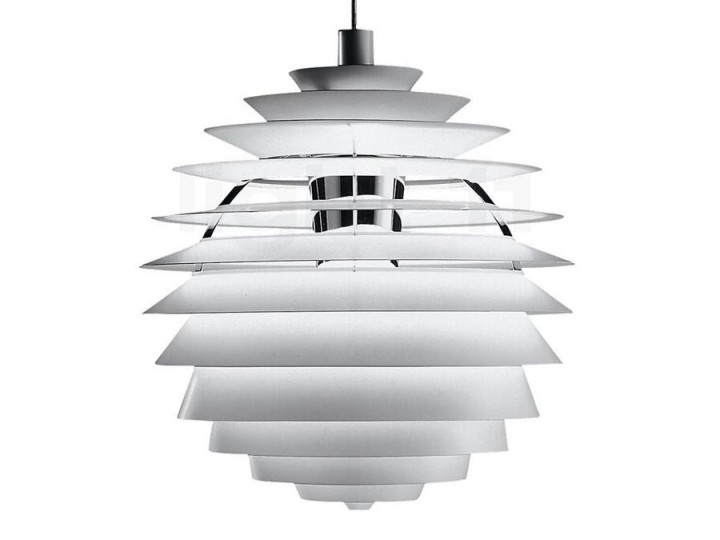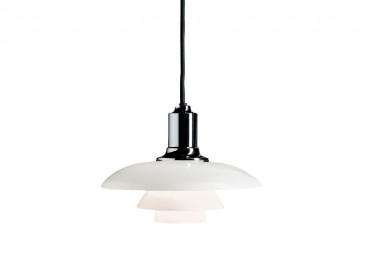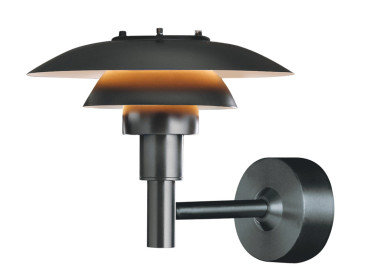Mid-Century modern scandinavian pendant lamp PH Louvre by Poul Henningsen
-
Poul Henningsen
-
Louis Poulsen
- LP065 Delivery time 1 / 2 weeks
Mid-Century modern scandinavian pendant lamp PH Louvre by Poul Henningsen
Poul Henningsen designed his first lights back in 1925-1926 for an exhibition in Paris. His work with Louis Poulsen continued right up until his death in 1967. Throughout his life, PH sought to create glare-free light, direct light where it was most needed, and create soft shadows, using incandescent bulbs as a light source. PH Louvre was designed for the Adventist Church in Skodsborg, Denmark in 1957. The globe-shaped fixture is made up of 13 shades mounted on four supports. It is a simplification of an earlier light Poul Henningsen designed in 1942, called the Spiral.
Light source LED 2700K 96W. Lumen: 2741. Dimmable via Bluetooth via a tablet or smartphone.
| Year | 1957 |
| Dimensions | Width x Height x Length (mm) 600 x 650 x 600, 10.3 kg |
| Material | White lacquered aluminium, high-lustre finish on top and matt finish on underside, Frame: bright chrome plated aluminium. |
| Style | Classique Neuf |
| Origin | Denmark |
| Fournisseur | Louis Poulsen |
Poul Henningsen
Denmark (1894-1967)
Danish architect Poul Henningsen, known by his initials, PH was obsessed with light. He is the legendary creator of the lighting series carrying his name. He can be said to be the worlds first lighting architect.
Poul Henningsen devoted his entire career to investigating the importance of light for our well being. He worked on the theory that the observer should not be subjected to direct glare from the electric light source. Henningsen used a series of layered shades to both spread the light and conceal the light bulb, thus creating a softer more diffused lighting. One of Denmark's major figures in 20th-century lighting design, Henningsen was also an independent architect, designer of theatre interiors and tubular steel furniture, critic, and editor of the magazine Kritisk Revy (Critical Review). Highly critical of the widespread lack of imagination in domestic lighting in Copenhagen, Henningsen came to prominence with the first of his multi-shade lamps designed in 1924, setting the pattern for his subsequent lighting work. Known as the Paris Lamp (and later as the PH lamp) it won a competition for a light fitting for the Paris Exposition des Arts Décoratifs et Industriels of 1925, where he was awarded a Gold Medal, and was put into production by the Danish lighting manufacturer Louis Poulsen.
Henningsen's design principles were based on the scientific analysis of the ways in which lampshades distribute light, glare, and reflection. The PH lampshades were composed of a series of separate, interleaved elements that gently diffused the light throughout the space in which it was situated as well as directing it downwards















